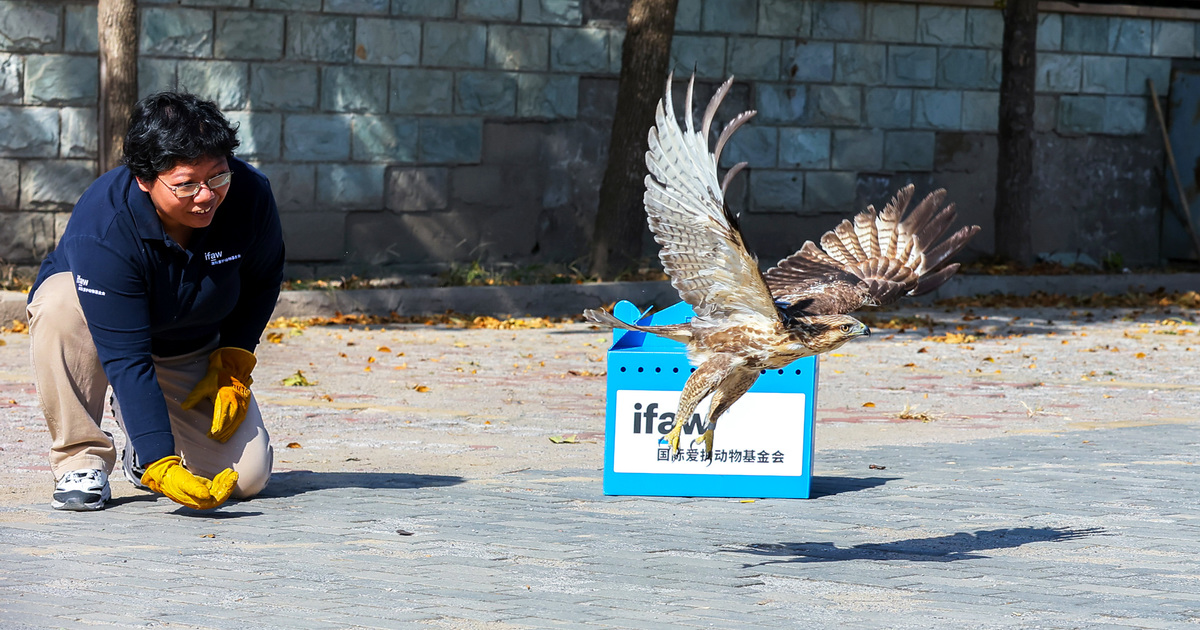
During Australia’s Black Summer of 2019 to 2020, bushfires ravaged the country and severely damaged Two Thumbs Wildlife Trust Sanctuary, a haven for birds, bats, marsupials, and mammals in southern New South Wales.
IFAW has been working with Habitat Innovation and Management to restore the 724-hectare property. This involves installing 120 nest boxes including 20 revolutionary boxes capable of housing multiple tree hollow-dwelling species. We also helped carve out 20 tree hollows to provide more homes for these animals, dispersed seeds to enhance biodiversity, and helped with soil erosion control and fencing to aid in the recovery of this landscape. In addition, we planted 2,000 native grasses and trees to encourage birds like the glossy black cockatoo to repopulate the sanctuary.
7. Preparing orphaned elephants for return to the wild
For young elephants, it’s often a death sentence if they lose their mothers or become separated from their herds. In Zimbabwe and Zimbabwe, both home to endangered African savannah elephants, IFAW is working to change this.
In 2012, IFAW’s partner organisation Wild is Life established the Zimbabwe Elephant Nursery (ZEN). We support the rescue and rehabilitation of elephant calves who end up there often as a result of poaching, human-wildlife conflict, falling into mud or ditches, or becoming separated from their herds. These orphans spend about three to five years in the care of rehabilitators, receiving round-the-clock, personalised attention from the keepers. Once they mature, it’s time to find them a herd to join in the wild.
To give these elephants a new home after their rehabilitation, we worked with government agencies to secure an 85,000-acre (34,000-hectare) habitat in the Panda Masuie Forest Reserve. So far, six elephants have joined wild herds in this space.
In Zambia, we helped create the Lusaka Elephant Nursery alongside Game Rangers International (GRI). Once the elephants rescued here are old enough to be weaned off milk, we move them to a release facility in Kafue National Park. Tracking them via satellite collars, we ensure that they integrate into wild herds.
8. Removing snares around Hwange National Park
Snares are often set by poachers to catch animals, and they can cause slow, painful deaths for their victims.
In Zimbabwe, IFAW supports a team of rangers staffed by the Dete Animal Rescue Trust (DART) who patrol the buffer area bordering Hwange National Park and undertake the tedious task of removing snares. From July to September 2022, they recovered a total of 231 snares. Thanks to their dedication and supervision, the number of snares detected in the area plummeted by 80% between 2022 and 2023. From April to June 2023, they found only 43 snares.
Now, wildlife is thriving more than ever in the park, including elephants, African fish eagles, Egyptian geese, and kudus.
9. Disrupting online illegal wildlife trade
Wildlife trafficking happens around the world, and the internet is no exception. It has made it easier than ever to trade endangered animals around the globe, threatening numerous species with extinction.
As we are dedicated to combatting wildlife crime on the ground by supporting rangers and local governments, IFAW also works to fight the illegal trade that occurs online. We work as a convener across public and private sectors, engaging with governments, academia, law enforcement, civil society, online marketplaces, and social media platforms to deliver joint projects and activities and provide data, information, and training. We’ve provided more than 30 trainings globally to over 1,500 enforcers in China and 200 in Europe.
In 2018, we helped launch the Coalition to End Wildlife Trafficking Online with WWF and TRAFFIC. The Coalition comprises 46 companies with over 11 billion total user accounts. Five years after its launch, our company partners reported blocking or removing more than 11 million listings that violated wildlife crime policies. These listings included countless big cats, reptiles, primates, birds, and parts from animals like elephants, pangolins, and sea turtles.
